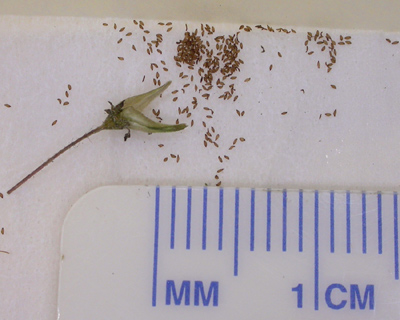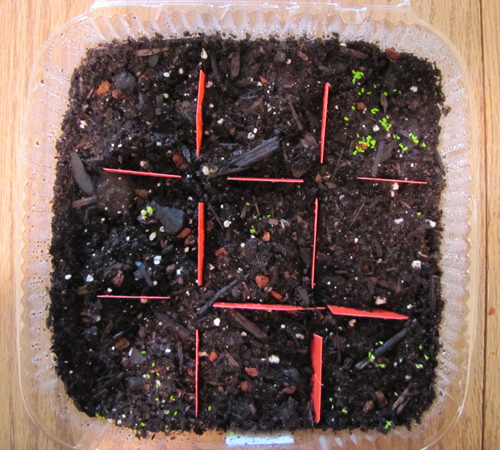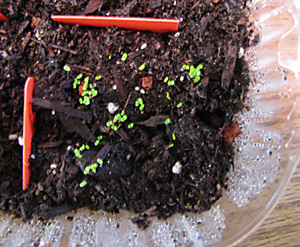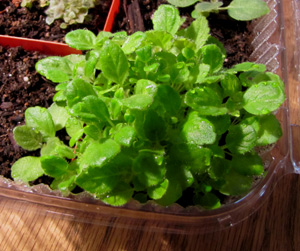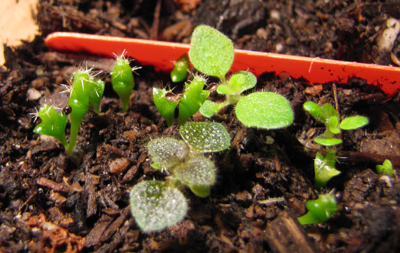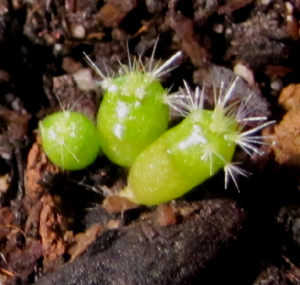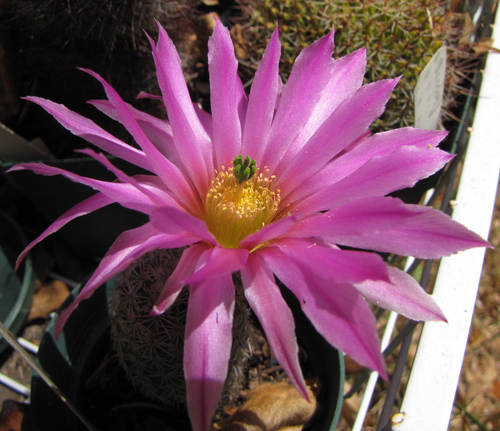How Dry I Am
The main property of this plant is that it is dry: in order to make the seed
last as long as possible, the mother plant has extracted almost all the water
from it.
From the energy standpoint, this is a very expensive process, because it is,
in effect, pumping water uphill.
Water is being pulled from the increasingly water-poor region -- namely, the seed -- and
transported to the water-rich region -- namely the mother plant.
The energy cost of this water extraction is a major component of the energy
budget of making a seed.
Why does the mother plant do this?
Water is the enemy of preservation.
Mummies which last 4000 years in the Egyptian desert wouldn't last 40 days in Hawaii.
Water enables chemical reactions.
This is good when suitable conditions for growth are present but not good
when the water is from the mother plant and the world outside is cold and dry.
Therefore the seed is set to wait for the time when there is enough warmth and water
from the environment for it to grow on its own.
Seed Love
In 1996, at the Gesneriad Research Foundation seminar in Sarasota, hosted by
Hans Wiehler, the participants were all asked to name their favorite gesneriad.
I had no trouble answering: a seed.
For me, a seed is a plant I haven't ruined yet.
It's full of promise and hope, the possibility of being the greatest thing
since dark chocolate, and yet a complete plant sitting there in its
hard envelope, waiting for just the right conditions to come along.
(This wasn't the answer expected of me.
I was supposed to say "unifoliate streptocarpus", one of my enthusiasms at
the time, and which I dutifully supplied after sufficient prodding.
Even so, you can see that unifoliate streps are just seeds after a certain
amount of development, so the principle remains.
Seeds are what growing is about.)
|
